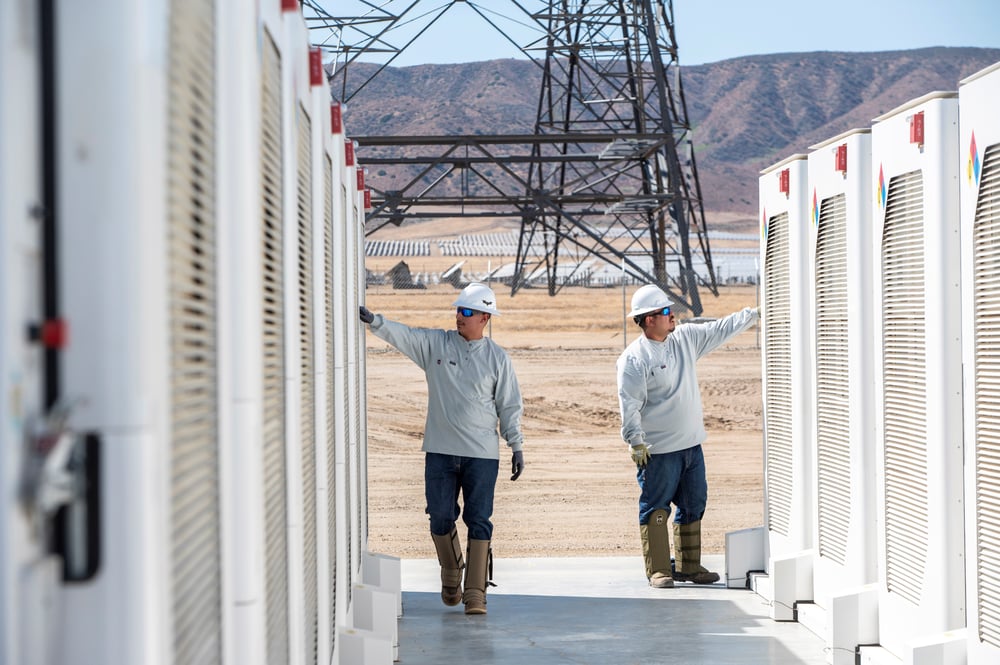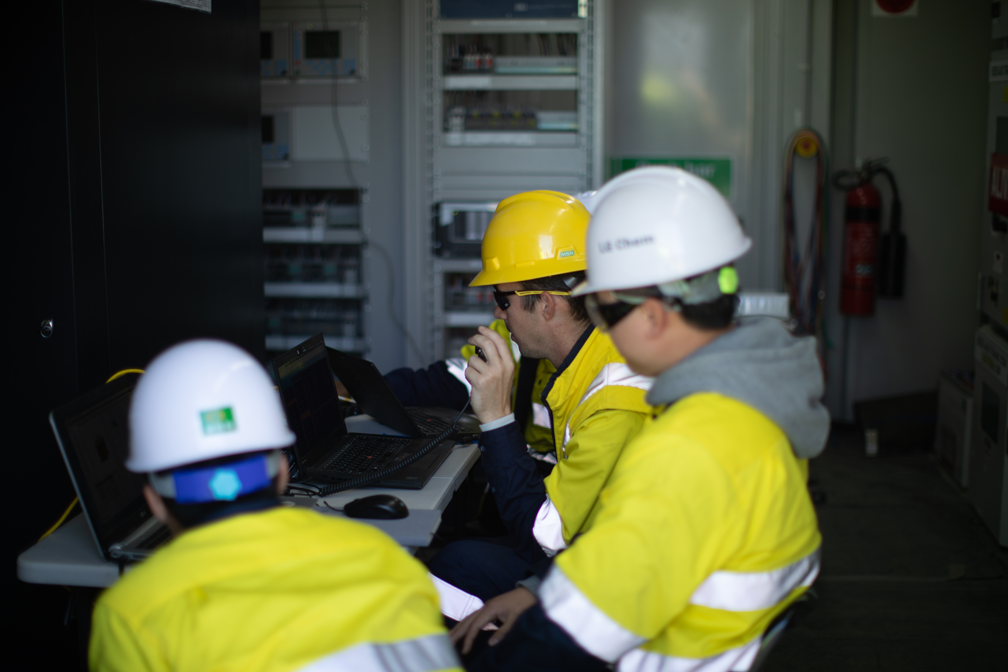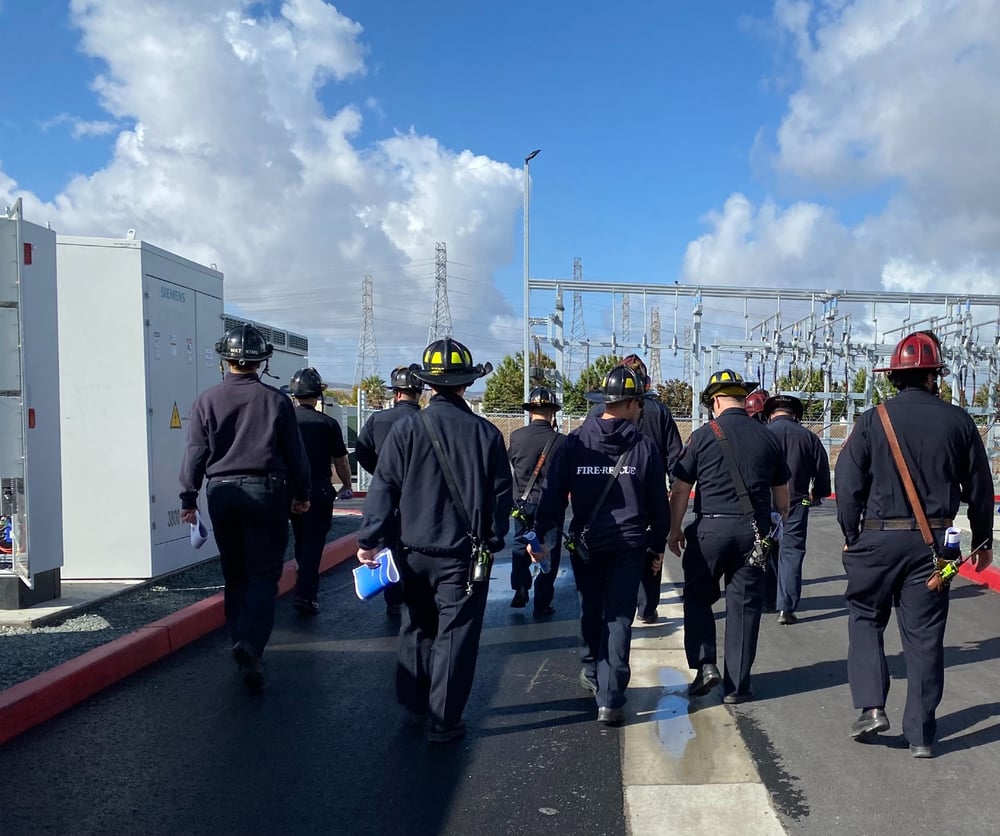Four Critical Elements of a Battery Storage Emergency Response Plan (original) (raw)
Battery storage systems play a pivotal role in the development of a more modern, sustainable, and resilient power grid. They are a highly effective resource for providing critical grid support – including peaking capacity, stabilization services, and renewable energy integration - and have grown markedly over the last few years. This trend is expected to continue, with BloombergNEF’s 2023 Energy Storage Market Outlook showing a 23% compound annual growth rate in energy storage to 2030, with annual additions reaching 88 GW, or 5.3 times the volume of installations in 2022.
This dramatic growth in installed capacity is generating new levels of scrutiny around project safety and operations. As the size and scale of projects grow, project owners, first responders, local permitting authorities, and policy makers have a vested interest in maintaining the highest levels of safety – particularly during potentially dangerous or hazardous incidents. Site-specific Emergency Response Plans (ERPs) have become the standard for documenting the potential hazards and response protocols for such incidents. A long-standing best practice for many in the industry, these ERPs are becoming mandatory in many jurisdictions. For example, California Senate Bill 38, signed into law in October 2023, now requires battery storage facility owners in the state to develop an ERP in coordination with local agencies, and submit those plans to the county and city where the facility is located.
While final ownership of an ERP falls to project owners, Fluence and other technology providers have an important role to play in documenting product safety, contributing to first responder training, and supporting owners during safety-related events. In this blog post, we will explore four key (non-exhaustive) elements we believe should be part of every battery storage ERP.

1. Hazard Identification
A robust battery storage ERP begins with a thorough risk assessment and hazard identification process. Identify potential risks and hazards specific to your battery storage site. These could include chemical and toxicity, electrical, fire and explosion, or environmental and natural disaster. For example, we’ve seen fires, flooding, and wind hazards adjacent to project sites that our customers had to mitigate. Assess the severity and likelihood of each hazard to determine appropriate response strategies. This step enables you to develop targeted mitigation measures and establish protocols for effective emergency response.
Make sure to work with your battery storage technology provider to gather relevant product and safety documentation, and mitigation measures covering everything from equipment voltage ratings to battery chemical composition and explosion mitigation features. This documentation is not only necessary for developing a detailed ERP, but it’s also important for securing project permits and approvals.

2. Defined Roles and Communication Plans
In everyday operation and especially in an emergency, having clearly defined roles and responsibilities is crucial for a coordinated response. Designate specific individuals or teams responsible for initiating emergency procedures, communicating with relevant stakeholders, and managing the overall response effort. Clearly outline the decision-making authority and establish communication protocols among key personnel, emergency responders, and utility operators. Clarity in roles and responsibilities ensures a swift and efficient response, minimizing downtime and potential risks during an emergency.
It's critical that all sites have emergency contacts designated for both the project owner and the equipment supplier. Include a list of specific roles and their associated responsibilities directly in the ERP. It’s important that your battery storage technology provider is included in the development of this plan, and you have multiple points of contact in case of any incidents on-site.
3. Emergency Response Protocols
Battery storage systems require well-defined emergency response protocols to ensure safety during critical events. Due to lack of training, personnel change, or lack of established procedures, serious injuries or unnecessary damage could be caused by inappropriate access to the equipment or improper hazard mitigations, such as the unnecessary use of water or other substances. These protocols should be easily accessible, regularly reviewed, and communicated to all relevant personnel. Well-executed procedures minimize the risk of further damage and protect both the system and personnel.
Not all site level issues are created equal and response protocols will vary. What system data is available to characterize a specific alarm and possible causes? How do you evaluate if there is a fire issue with the system? How close should you get to the equipment? Who is notifying the first responders? A well-defined first response plan will describe the recommended response to potential incidents based on the issue and its progression, and the key personnel responsible for taking different actions. Response plans should include site hazards, how those events are identified by the battery storage system, any automated response built into system safety features, and any actions recommended for site operator or first responder intervention.
While a well-documented response plan should be developed for every battery storage site, emergency response will vary over the duration of the incident based on the severity. This underscores the importance of proper first responder training and preparedness, which brings us to our next critical element.

4. First Responder Training and Preparedness
Annual training sessions are essential to getting first responders familiar with battery storage technology and preparing them for emergency response scenarios. Project owners should work with their technology provider and local fire departments to deliver comprehensive training programs that focus on emergency protocols, hazards, and onsite equipment. Active participation and feedback from all stakeholders can help trainers and trainees continuously improve emergency response planning.
Fluence has delivered dozens of first responder trainings in the last two years. This is a fundamental part of our project delivery scope, an important step in the installation-to-operations hand-off process, and is also available as an ongoing service. Training topics may vary from organization to organization, but we believe a comprehensive first responder training should include:
- Intro to Battery Energy Storage Systems (BESS)
- Site-specific overview of equipment
- Various types of failure modes
- Hazards associated with failure modes and the system mitigations
- Emergency incident response protocols
In our experience, it’s important for project owners to complete the ERP prior to first responder training. We also recommend project owners continue to engage their local first responders and fire departments over the life of the battery storage system. Annual refresher training can help stakeholders stay up to date with the latest safety information, or any changes in site conditions and operations.
Key Takeaways
Overall, the growing number of battery storage systems in operation, their potential risks, critical infrastructure integration, and regulatory requirements are driving the increased importance of developing ERPs. A well-designed ERP is essential for maintaining the resilience, safety, and reliability of storage systems during critical situations. By incorporating these four elements into an ERP, organizations can enhance their preparedness and response capabilities.
At Fluence, we put safety at the forefront of everything we do – from incorporating the latest product safety features and performing industry-leading fire testing, to delivering comprehensive first responder training. As battery storage deployments continue to grow, all industry stakeholders must work together to refine standards, share best practices, and improve site safety.
Want to learn more about how Fluence is leading the battery-based energy storage industry in safety?
Allan Rhodes has served as Fluence Americas Principal Fire Protection Engineer since 2022. He has been instrumental in advancing the development and implementation Fluence's industry-leading full-scale fire testing of each new product offering. Allan is a member of NFPA 855 and active in several energy storage industry steering committees. He has over 40 years of experience in the fire protection industry.


